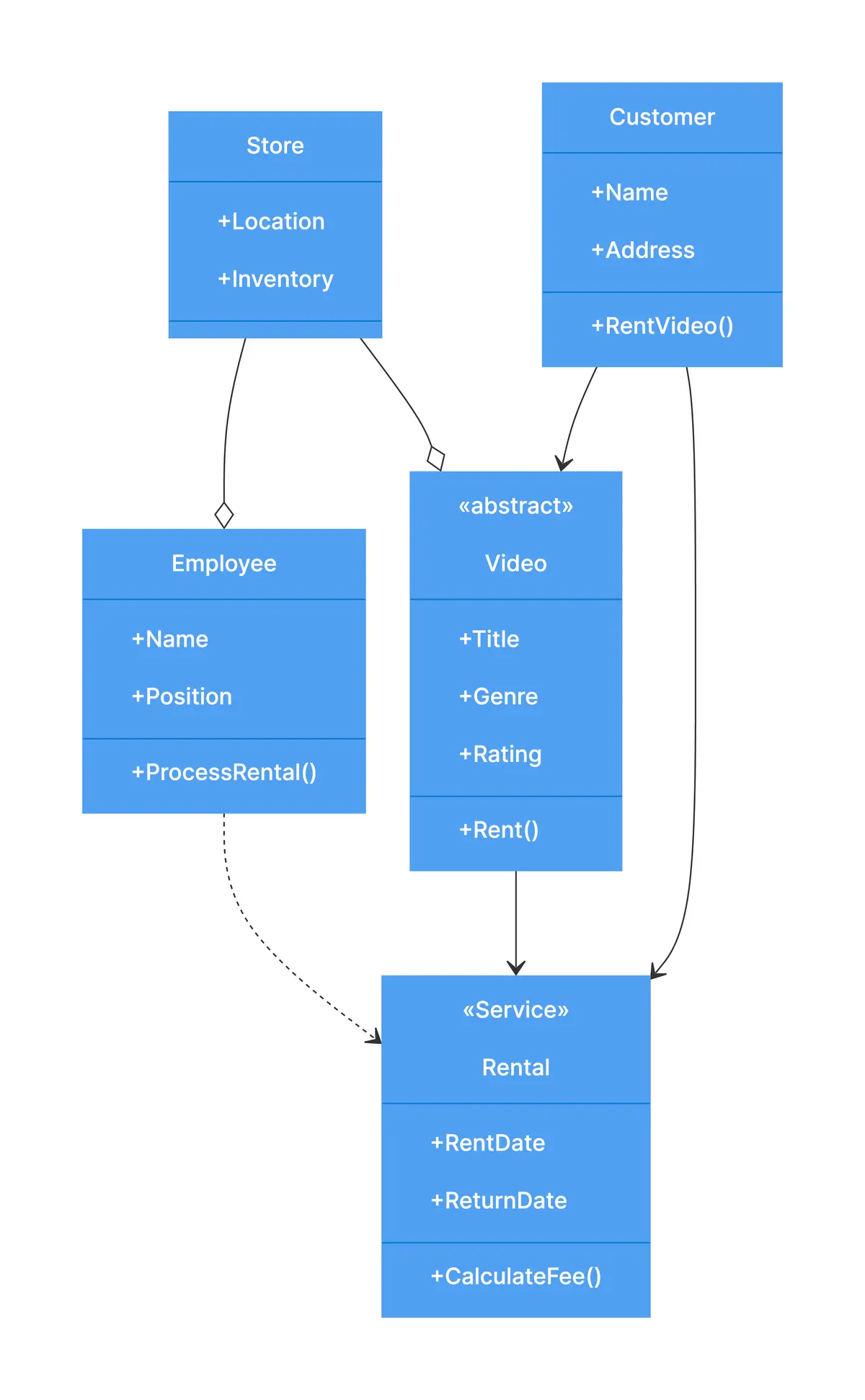This class diagram depicts a Video Rental System where customers rent videos from stores managed by employees. Customers select titles from the "Video" class and rent them using the "Customer" class. Employees process rentals and manage inventory in physical "Stores." Transactions are represented by the "Rental" class, detailing rental dates and fees. This system simplifies the video rental process, facilitating customer transactions and inventory management by employees.

Edit this diagram in Gleek
Video rental system diagram code in Gleek
Video:abstract
+Title
+Genre
+Rating
+Rent()
Customer
+Name
+Address
+RentVideo()
Rental:service
+RentDate
+ReturnDate
+CalculateFee()
Store
+Location
+Inventory
Employee
+Name
+Position
+ProcessRental()
Video-->Rental
Store--<>Employee
Store--<>Video
Employee-.->Rental
Customer --> Video
Customer-->Rental
About class diagrams
Class diagrams are used in software engineering to describe the structure of a system. A class diagram uses Unified Modeling Language (UML) to show the classes, attributes, methods (or operations), and their relationships to each other in the system. Class diagrams prove valuable in object-oriented modeling. Class diagrams can be used to model the data structure or to design a system in detail.
Similar class diagram examples
Library management system class diagram
Online shopping system class diagram
Restaurant management system class diagram
Weather forecasting system class diagram
Order processing system class diagram
Animal inheritance class diagram
E-commerce website class diagram